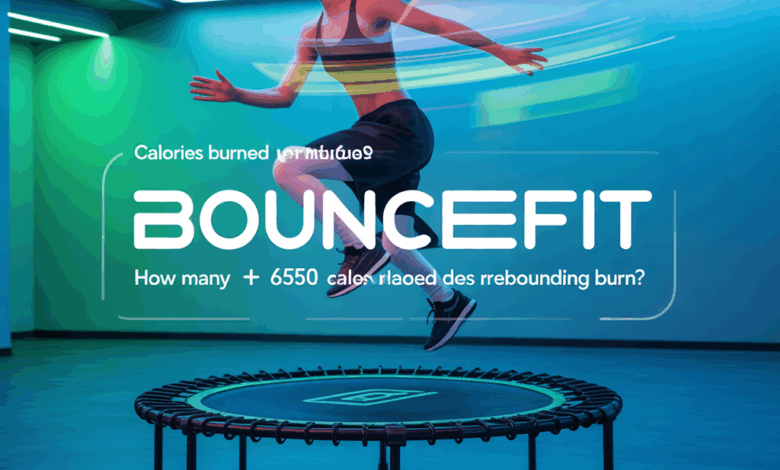How Many Calories Does Rebounding Burn? A Practical Guide to Mini-Trampoline Calorie Burn

Ever caught yourself bouncing on a small trampoline in your living room and wondered, “Am I actually burning calories — and how many?” Whether you’re pressed for time, hate running, or want a fun low-impact cardio option, rebounding can feel like play that doubles as exercise. In this guide I’ll break down realistic calorie estimates, share workout plans, and give tips so your rebound workouts actually move the scale and improve your fitness.
Why rebounding is worth your time
Rebounding — exercising on a mini-trampoline — is a low-impact, joint-friendly cardio option that also challenges balance, coordination, and lymphatic circulation. It’s ideal for busy people, beginners, and anyone seeking variety. But the burning question remains: how many calories does rebounding burn compared to running or cycling? The short answer: it depends on your weight, workout intensity, and session length. Below I’ll walk you through numbers you can use to plan workouts and track progress.
How many calories does rebounding burn? (Actual numbers and examples)
A reliable way to estimate calories burned is to use MET values (Metabolic Equivalent of Task). Common MET estimates for rebounding are:
- Gentle bounce / basic balance: ~3.0 METs
- Moderate steady rebounding (a steady cardio pace): ~5.0 METs
- Vigorous interval rebound workouts (HIIT-style): ~7.0 METs
Use this formula to estimate calories per minute: calories/min = (MET × 3.5 × weight in kg) / 200.
Real-world examples
- 60 kg (132 lb) person:
- Gentle (3.0 MET): ~3.15 kcal/min → ~189 kcal/hour
- Moderate (5.0 MET): ~5.25 kcal/min → ~315 kcal/hour
- Vigorous (7.0 MET): ~7.35 kcal/min → ~441 kcal/hour
- 80 kg (176 lb) person:
- Gentle (3.0 MET): ~4.2 kcal/min → ~252 kcal/hour
- Moderate (5.0 MET): ~7.0 kcal/min → ~420 kcal/hour
- Vigorous (7.0 MET): ~9.8 kcal/min → ~588 kcal/hour
So depending on intensity and body weight, rebounding can burn roughly 200–600 calories per hour. Shorter, higher-intensity sessions (e.g., 20–30 minute HIIT) can produce similar calorie burns to longer moderate sessions — and may be more time-efficient.
Benefits beyond calorie burn
Rebounding isn’t just about the numbers on a calorie chart. It also:
- Reduces joint impact compared to running
- Improves balance, proprioception, and core stability
- Stimulates lymphatic flow and recovery
- Can be done at home — perfect for busy schedules
Practical rebounding workouts and variations
Here are simple, effective sessions you can try. Adjust time and intensity to your fitness level.
Beginner: 15–20 minute basic bounce
- Warm up 3 minutes: gentle bounce, light arm swings.
- 10 minutes: alternate 1 minute steady bounce + 1 minute active recovery (march on trampoline).
- Cool down 2–3 minutes: slow bounce and calf stretches.
Intermediate: 30-minute steady cardio
- Warm up 5 minutes.
- 20 minutes steady moderate rebounding — add knee lifts, twist squats, and arm movements for resistance.
- Cool down 5 minutes.
Advanced HIIT: 20-minute interval burner
- Warm up 3–4 minutes.
- Cycle 30 seconds all-out bounce (fast feet, high knees) / 60 seconds easy bounce — repeat 10 times.
- Cool down 3–4 minutes.
To add strength, use light dumbbells or resistance bands for upper-body moves while bouncing, or include bodyweight moves off the rebounder between rounds.
Practical tips for maximizing calorie burn and safety
- Keep your posture tall — engage your core to improve efficiency and protect your back.
- Progress gradually: increase session length or intensity by 5–10% weekly.
- Use proper footwear or go barefoot depending on your rebounder instructions.
- Hydrate and fuel appropriately — small pre-workout snacks help sustain intensity.
- Mix formats: steady-state days + HIIT days + active recovery to avoid burnout.
Nutrition and lifestyle advice to support results
Calories burned during exercise are only part of the weight-loss equation. Combine your rebound workouts with sensible nutrition and recovery:
- Prioritize protein (20–30 g per meal) to preserve lean mass.
- Create a modest calorie deficit — avoid drastic cuts that harm performance.
- Sleep 7–9 hours per night to support recovery and appetite regulation.
- Track progress with weekly body measurements, how clothes fit, and fitness markers rather than obsessing over daily weight.
For workout sequencing ideas, check out our workout routines page. If you want meal plans that support your bounce sessions, see our nutrition guides. For recovery and habit-building, browse our wellness tips.
Frequently Asked Questions
It varies by weight and intensity. Expect roughly 200–600 calories per hour: lower for gentle bouncing and higher for vigorous interval-style workouts. Use the MET formula (MET × 3.5 × weight in kg / 200) for a personalized estimate.
Yes — when combined with a sensible calorie-controlled diet and consistent training. Rebounding offers efficient cardio, low joint stress, and can be done frequently, which helps create the calorie deficit needed for fat loss.
Generally yes, because it’s low-impact. Start with short sessions and a stable bounce, avoid high-impact jumps if you have balance issues, and consult a healthcare provider if you have a history of joint or cardiovascular problems.
Conclusion — Start bouncing your way to better fitness
If you’ve ever wondered how many calories does rebounding burn, now you have a clear picture: with the right intensity and consistency, a mini-trampoline workout can burn substantial calories (and deliver other health benefits). Start with short, regular sessions, mix steady-state days with HIIT, and combine your workouts with balanced nutrition and sleep. Ready to try a rebound routine this week? Pick one of the workouts above and commit to three sessions — track how you feel and the calories you burn, then ramp up from there.
Want more structured plans and meal ideas to support your rebound training? Explore our workout routines and nutrition guides, or grab tips from our wellness tips collection to build a sustainable habit. Bounce on — and let that calorie burn add up!





